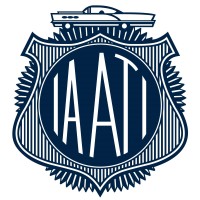Neels De Jager-Telesure
The investigation revealed a new trend, a vehicle was cloned with the identity of a vehicle outside the RSA, with the identity of a written-off vehicle from the RSA Neels De Jager (hereafter referred to as the Investigator) employed by Telesure Investment Holdings, Stolen vehicle claims investigations team.
The policy holder lodged the claim on 17/01/2022. The policy holder alleged that he was hi-jacked in Ledig near Rustenburg. The incident was validated. The history of the vehicle was investigated, and the following was found:
The vehicle that was insured was 2019 FORD RANGER RAPTOR 2.0 D BI-TURBO 4x4 A/T.
The Investigator tested the VIN on the Vehicle Salvage Data base. The vehicle was written off in an accident on 05/12/2020. The vehicle was assessed and deemed to be unsafe to repair to the manufacturer’s specifications. This means that the vehicle can only be stripped for parts. It cannot be sold with the registration certificate. An administration mark was placed on the record by the Insurance Crime Bureau to prevent it from further registration and manipulation.
The vehicle was dealer stocked in the name of Insurance Company A on 10/02/2021 and de-registered as scrapped. Insurance A was still in possession of the original de-registration certificate. The damage to the vehicle was so severe that the engine mounting was torn out of the chassis frame. The chassis frame was bend. This was the reason why it was deemed unsafe to repair.
The policy holder bought a Ford Ranger Raptor with the same engine and chassis number from Dealership X. The invoice supplied do not reflect the date, but the vehicle was insured by the policy holder on 24/11/2021.
The vehicle was not financed. The policy holder made an agreement with Dealership X to pay the vehicle with monthly instalments.
Dealership X supplied the policy holder with a copy of a Botswana registration certificate with registration number B647AJY. This registration was done 23/02/2021.
The Investigator visited the premises of Dealership X. The owner kept on evading the Investigator and only spoke to him on the phone. In that interview the owner said that he bought code 4 vehicles from a salvage company and repair the vehicles. He then sold them. The Investigator requested that he send him proof of purchase. The owner then sent him an invoice from the salvage company. It noted the transaction as 26/02/2021. The invoice also noted “stripping for parts only”
At Dealership X, the Investigator requested to see the original Botswana registration certificate. The receptionist went onto their system and could only produce an electronic copy which she printed for the Investigator. It was strange to observe no vehicles on the floor to sell, or being advertised, only the receptionist present with a laptop. Also, no cabinets seen used for documentation.
The Investigator inspected the document and found the following:
- The date of first registration was noted as 23 Feb 2021. This was three days before the salvage vehicle was bought from the salvage company.
- The vehicle that was placed on cover was noted as a FORD RANGER DBL 2.0L BIT RAPTOR 4X4 157KW 10A. The description on the registration certificate showed the engine capacity as 2.5.
- The year of first registration on Natis reflected as 2019. The year model on the registration certificate showed 2020.
The Investigator followed up with the Botswana registration office via the International Vehicle Crime Investigation Unit. They confirmed that the registration B647AJY was issued to a white 2004 Toyota Hilux that is still registered in the name of a Botswana citizen. On the VIN and engine numbers, there are no records on Botswana registration system.
The Investigator contacted the owner of the dealership and request him to send proof of repairs to the vehicle. The owner could not supply any invoices but sent photos to the Investigator. These photos were the same photos as the photos supplied by the policy holder for self-inspection.
When an administration mark is placed on the record of a vehicle because it is unsafe to be repaired, it cannot be registered again, that was possibly the reason the vehicle was reintroduced outside RSA. The mileage reflected on the photos when the vehicle was written off was noted on 20554 km. The photos supplied by the policy holder when he did the self-inspection was noted on 54329 km. This means the vehicle travelled 33775 km in three months.
The industry introduced the code 3A status specifically to prevent that the records of a scrapped vehicle to be used to clone a vehicle. If a vehicle is deemed to be unsafe to repair, this mark was placed on the vehicle so that it can only be stripped for parts. Insurance A was still in possession of the original de-registration certificate at the time.
This vehicle could not have been repaired. The dealer produced a falsified Botswana registration certificate. The dealer only bought the vehicle from a salvage company on 26/02/2021. It would be highly unlikely to repair the vehicle, take it to Botswana, have it registered, bring it back to RSA and sold it three days before the invoice from the Salvage company.
The only conclusion the Investigator could make why the vehicle was falsely registered, is to hide the real identity of the vehicle. The records were manipulated to sell a cloned vehicle.
